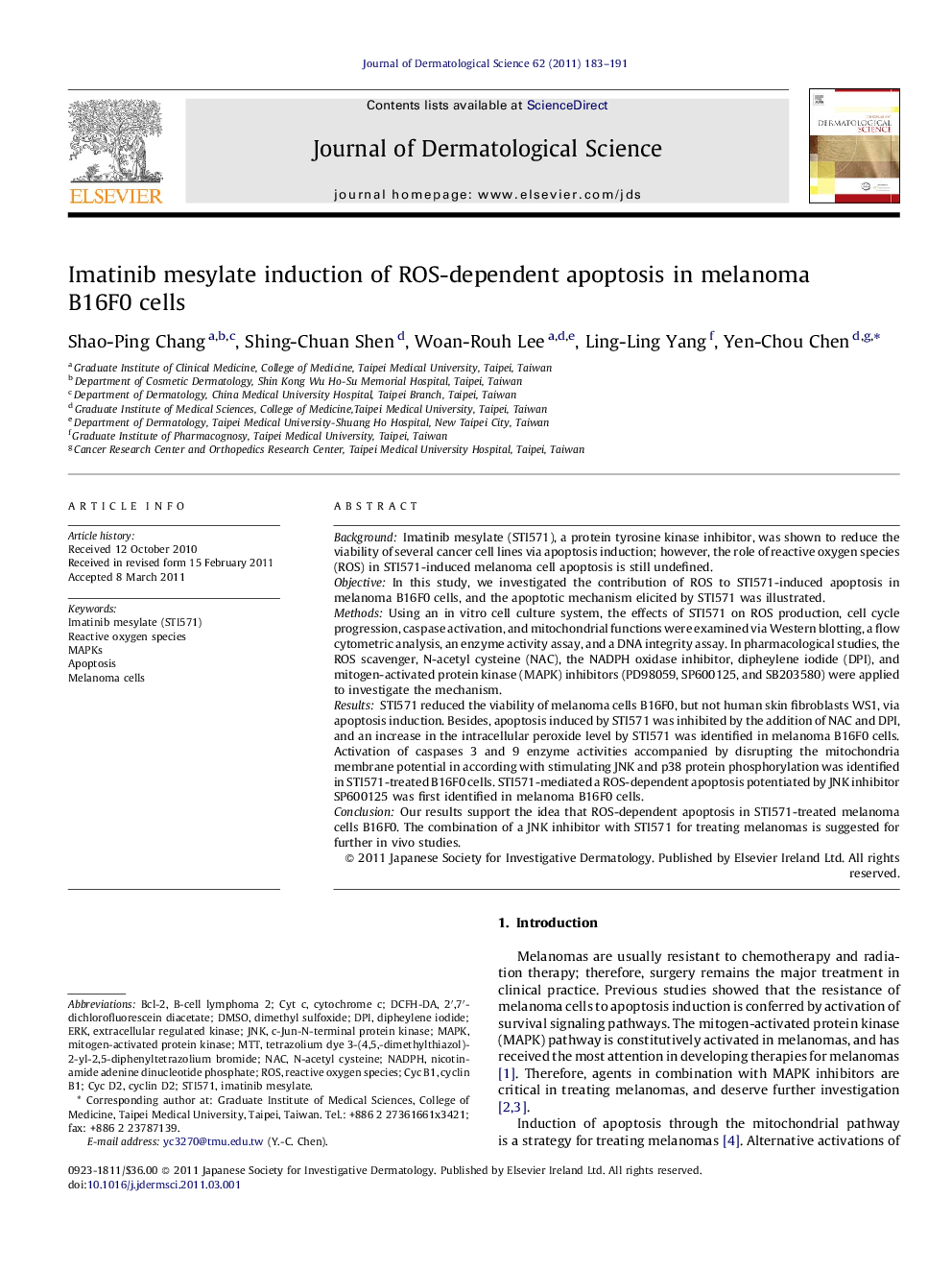| کد مقاله | کد نشریه | سال انتشار | مقاله انگلیسی | نسخه تمام متن |
|---|---|---|---|---|
| 3213409 | 1203231 | 2011 | 9 صفحه PDF | دانلود رایگان |

BackgroundImatinib mesylate (STI571), a protein tyrosine kinase inhibitor, was shown to reduce the viability of several cancer cell lines via apoptosis induction; however, the role of reactive oxygen species (ROS) in STI571-induced melanoma cell apoptosis is still undefined.ObjectiveIn this study, we investigated the contribution of ROS to STI571-induced apoptosis in melanoma B16F0 cells, and the apoptotic mechanism elicited by STI571 was illustrated.MethodsUsing an in vitro cell culture system, the effects of STI571 on ROS production, cell cycle progression, caspase activation, and mitochondrial functions were examined via Western blotting, a flow cytometric analysis, an enzyme activity assay, and a DNA integrity assay. In pharmacological studies, the ROS scavenger, N-acetyl cysteine (NAC), the NADPH oxidase inhibitor, dipheylene iodide (DPI), and mitogen-activated protein kinase (MAPK) inhibitors (PD98059, SP600125, and SB203580) were applied to investigate the mechanism.ResultsSTI571 reduced the viability of melanoma cells B16F0, but not human skin fibroblasts WS1, via apoptosis induction. Besides, apoptosis induced by STI571 was inhibited by the addition of NAC and DPI, and an increase in the intracellular peroxide level by STI571 was identified in melanoma B16F0 cells. Activation of caspases 3 and 9 enzyme activities accompanied by disrupting the mitochondria membrane potential in according with stimulating JNK and p38 protein phosphorylation was identified in STI571-treated B16F0 cells. STI571-mediated a ROS-dependent apoptosis potentiated by JNK inhibitor SP600125 was first identified in melanoma B16F0 cells.ConclusionOur results support the idea that ROS-dependent apoptosis in STI571-treated melanoma cells B16F0. The combination of a JNK inhibitor with STI571 for treating melanomas is suggested for further in vivo studies.
Journal: Journal of Dermatological Science - Volume 62, Issue 3, June 2011, Pages 183–191